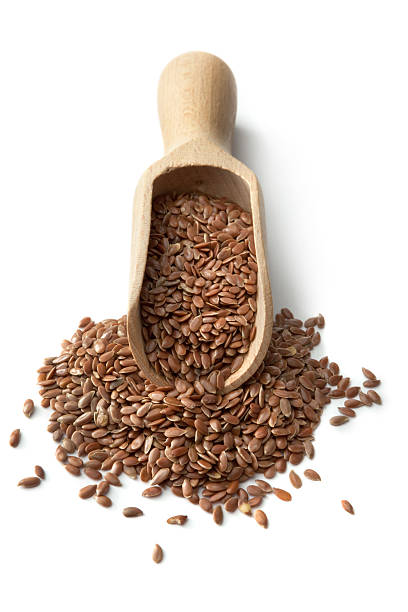
Reference: 00033669-0001



The seed is soft to bite and has a very mild flavor, somewhat reminiscent of sesame.
You can use it in bread, salads, biscuits, mueslis, and yogurts.
 Delivery
Delivery
Mondial Relay
 Returns
Returns
See conditions
 Payments
Payments
100% secure
Delivered in a resealable bag
 The taste of flax seeds is mild and very pleasant, pairing wonderfully with bread, where it is commonly found.
The taste of flax seeds is mild and very pleasant, pairing wonderfully with bread, where it is commonly found.
Flax seeds can also be added to yogurts, mixed salads, cakes, and muffins. For breakfast, a yogurt with added flax seeds, nuts, and raisins is a delicious and energizing way to start the day!
Flax seeds are the natural product richest in Omega-3! This is why many egg producers add flax seeds to their chickens' feed to produce the "famous" Omega-3-enriched eggs. Similarly, some dairy farmers include flax seeds in their cows' diets to enrich their milk with Omega-3.
Flax seeds are highly effective in combating chronic constipation. It's best to start with very small amounts and gradually increase to 1 or 2 level teaspoons per day. They should be consumed ground or thoroughly chewed and accompanied by a large glass of water to maximize their benefits!

Origin: Kazakhstan
Scientific name: Linum usitatissimum
Likely originating from the Mediterranean basin, this annual plant from the Linaceae family grows up to 70-80 cm tall and is now cultivated worldwide in temperate and tropical climates. The plant grows quickly, several centimeters per day, and requires little fertilizer or pesticides, making it an environmentally friendly crop! By mid-June, its flowers color the fields a beautiful lavender blue. To harvest the seeds, the entire plant is collected after flowering but before the seeds are fully mature and fall to the ground.
Canada is the world's largest producer and exporter of flax seeds, harvesting over 1 million tons annually.
There are two groups of flax plant cultivars: one grows in cool temperate climates and is used as textile flax for making fabric, paper, and ropes. Linen fabric is one of the few European vegetable textile fibers. The second group, oilseed flax, grows in warmer climates and produces seeds consumed as-is, ground into flour, or processed into oil.
°°°
 For centuries, the fibers from textile flax stems have been used to make fabrics and ropes. Flax has been cultivated for so long that it is no longer found in the wild.
For centuries, the fibers from textile flax stems have been used to make fabrics and ropes. Flax has been cultivated for so long that it is no longer found in the wild.
Ancient Egyptians cultivated flax and used its fibers for clothing, sails for their boats, ropes, fishing nets, and its nutritional and medicinal qualities. For mummification, they used linen fabrics so fine that even modern techniques cannot replicate them!
The oldest known fiber in the world is flax and dates back 36,000 years. It was discovered in a cave in Georgia.
Flax was introduced to France by Charlemagne, and its use became widespread starting in the 11th century. The Bayeux Tapestry, made of linen, attests to the presence of flax at that time. In the 17th century, its use peaked with the production of Cambrai linens, Alençon lace, shirts, and handkerchiefs. However, French production gradually declined with the large-scale importation of cotton, which replaced flax.
In early 20th-century Europe, flaxseed oil for consumption was delivered weekly in small glass bottles, as it quickly became rancid when exposed to light and air, unlike whole seeds, which store very well.
English: Flax, linen
***
Data sheet
Reference: 00033669-0001
Reference: 2N7072401
Reference: 9N76632004
Brand: Epiciane
Reference: 9N76632004
Brand: Epiciane
Reference: 20701706
Reference: coriandreE
Reference: 11N7754201
Reference: 10M6741201
Reference: celerigraines
Reference: 2N7072401
Reference: 20711101
Reference: 124510
Reference: fenouilE
Reference: 00033669-0001
Reference: 20703402
Reference: grainesaroussir
Reference: 11N7892701

The seed is soft to bite and has a very mild flavor, somewhat reminiscent of sesame.
You can use it in bread, salads, biscuits, mueslis, and yogurts.